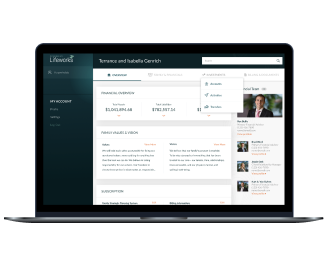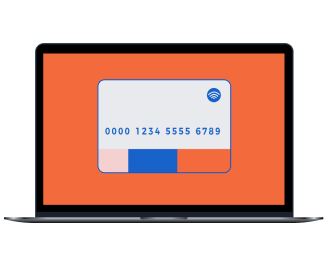Banking as a service for a wealth management platform
Learn how we helped a FinTech company engage younger audiences in wealth management with a smooth user experience and new functionality.
-
industry
FinTech
-
Country
USA
-
team size
10+ IT experts
-
Collaboration
April – July 2021
About the client
Our client offers wealth management services and strategic advising to individuals, businesses, and entrepreneurs. Their platform provides investors with core tools for managing and trading assets, including cryptocurrencies.
Additionally, they have a comprehensive education program to help their clients understand the investment landscape, market trends, and strategies for building and preserving wealth.

Business context
Our client saw a huge opportunity for targeting younger generations — specifically, Millennials and Gen Zers. Their aim was to provide a complete and aggregated budget view to help younger audiences make data-driven financial decisions and start investing in a smart and natural way.
To do that, the client needed to:
- integrate value-added functionality capable of effectively engaging and retaining new users to eventually turn them into loyal customers
- create a user-friendly and intuitive UI/UX so users could accomplish tasks quickly and easily
- enable extra benefits with new updates, catering to customers with varying aims and mindsets and encouraging them to remain loyal to the client
Solution overview
-
Analyzing the needs of new target audiences
Our team analyzed the needs and habits of Millennials and Gen Zers. Potential users proved to be tech-savvy and have active lifestyles. Asset management wasn’t initially of interest to them. Most still considered themselves too young to get started with investments. At the same time, they were interested in increasing their wealth and were looking for smart ways to manage their finances.
To attract this audience, our goal was to develop functionality that would:
- effectively assist users with their day-to-day financial activities
- eventually introduce users to the world of asset management
Taking into account the lifestyle and aspirations of younger generations, we bet on bridging the gap between new users and existing investment software with digital banking capabilities such as:
- account application
- account management
- card management
- transaction management
- statements
- notifications
- referrals
- digital loans
- P2P payments
- a cashback system
- expense management
-
Designing a monetization strategy
Through the implementation of digital banking functionality, the client enabled users to withdraw funds received from asset and cryptocurrency trades directly onto their debit card. Digital banking capabilities would help the client start receiving profit by:
- getting interest from cash on cards (deposits)
- collecting part of the interchange fee
The functionality would be available in two tiers:
- Free tier with digital banking and basic wealth management functionality
- Premium tier with advanced cost tracking and analytics capabilities
-
Implementing digital banking functionality
To find a banking provider to integrate with on the back end and get the system on track in accordance with the client’s business needs and industry security requirements, we:
- collected project requirements and researched available banking as a service (BaaS) solutions to pick the best option. We shortlisted products that satisfied the technical requirements: Galileo, Unit, and Column. Our client chose Unit because it met all requirements and was financially suitable.
- built a solution architecture that would allow for easy integration and a short time to market. Our engineers decided on a monolithic over a microservices architecture, as the product required a quick launch. We organized features into modules and established smooth communication among them.
- set up the integration using a proxy server. The product infrastructure needed to be independent for making functional customizations, performing essential administrative actions such as changing transfer limits, and switching to another core banking provider if needed.
-
Creating a user-friendly design fast and without compromising on quality
Our FinTech engineering unit had an established design system in place as well as a solid library of conventional and frequently used design patterns collected over years of developing FinTech and banking products. By applying them, we:
- saved the client’s budget and quickly prepared the first concepts
- introduced classic design patterns, combining them with catchy yet well-balanced animations to create a gratifying mobile experience
- kept the app’s design simple and intuitive yet classy to satisfy industry standards and end user expectations
- created a seamless user experience based on the client’s brand book and style guides
Value delivered
The results of our work include:
-
a scalable system that can be extended with new features by adding modules or converting existing modules into new services
-
a multifunctional and engaging wealth management platform that attracts younger audiences via user-friendly digital banking capabilities
-
an intuitive user experience within a customizable and convenient user interface
-
an increase of 1,000 active users and a $90,000 increase in quarterly transaction volume within one quarter
-
new revenue streams and capitalization opportunities
AUGMENT YOUR FINTECH PRODUCT TO WIN THE COMPETITION
Yalantis will make your application meet customer needs and attract new audiences with top-notch user experience design and functionality


